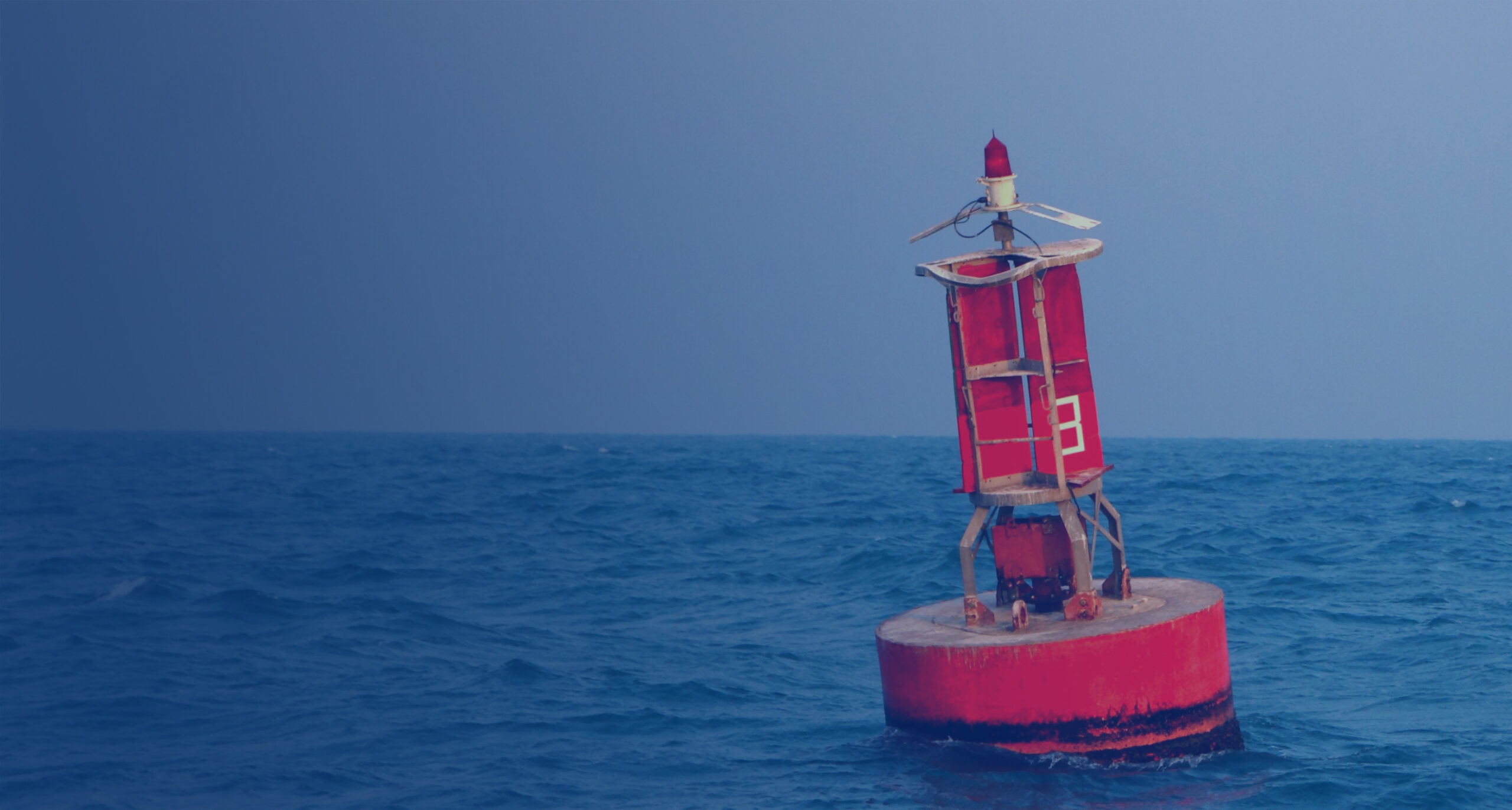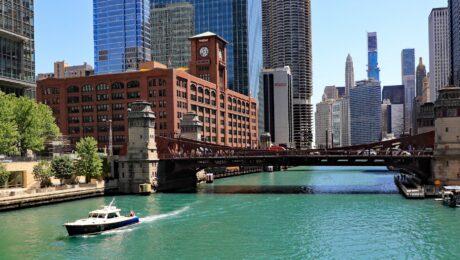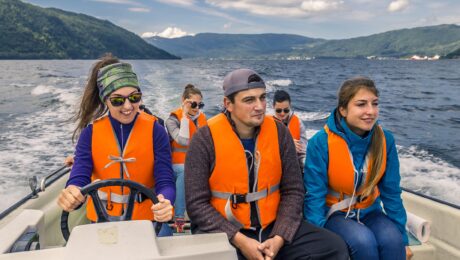Smart boaters know that safety on the water is key to carrying out a fun and happy adventure. At Ahoy! we provide boat insurance, and only boat insurance and one of the things that we know is that boating involves unpredictability, which requires an educated captain at the helm to overcome. A boating safety course will empower you to respond to any emergency and/or surprise situations with tact and deft, ensuring that you, your passengers, and your vessel make it back to the dock safely. Furthermore, many states are now requiring recreational boaters to obtain state-safe boating certificates, which will ultimately protect you and your loved ones from ignorance on the water. Although this new requirement may feel inconvenient to long-time boaters, brushing up on your boating education is never a bad idea. Here is all the information you need to know about obtaining your state-safe boating certificate so you can remain legal on the water.
A Big Change--New Standards for Boaters
Various states are adopting new boater education regulations in the coming years. You should take time to research your state’s standards and thus take the proper steps to obtain your boating safety certificate and be in compliance with the law. NASBLA (more on them below) has an interactive State Boating Education Requirements dashboard, where you can select your state and review your state’s regulations. Even if you already have a boating license, many states will still require the successful completion of a boating safety course for you to operate a vessel in their waters. After the course, boaters are required to pass a NASBLA-approved exam and then save and print their boating safety certificate.
Bear in mind that many states are choosing to implement the new law in stages, under which your date of birth will determine when you are required to obtain the certificate. For example, the state of New York will require all operators of motorized vessels to have a boating safety certificate by the year 2025. However, those born after January 1, 1983, will need one in 2023, and those born after January 1, 1978 will need one in 2024. Now, these effective dates vary by state, so the best way to be sure of your state’s standards is to head online or contact your local Wildlife and Fisheries Department.
What is NASBLA? Where can I take a NASBLA-approved course?
The National Association of Safe Boating Law Administrators (NASBLA) describes itself as a "national nonprofit, 501(c)3 organization that works to develop public policy for recreational boating safety." NASBLA is the organization responsible for determining if a boater education course meets the National Boating Education Standard. Their website has a variety of resources, from the aforementioned State Law Dashboard which details laws and regulations set forth by states and the U.S. Coast Guard to an acronym list of helpful nautical terms and organizations.
The NASBLA website also includes a dashboard of NASBLA Approved Education Courses by state, where an interactive map enables boaters to simply click on their state and peruse the list of NASBLA-approved classes. The list includes both virtual and classroom options for all types of learners, with options from the US Coast Guard Auxiliary, US Power Squadrons, and more.
What is the curriculum of a safe boating course?
Boating safety courses aren’t overly complicated--after all, the instructors and course providers want you to acquire the information not just to pass the exam, but also to apply it in your everyday boating activities. The knowledge should be presented in a clear and understandable way. The course covers topics the everyday boater should understand in order to safely operate a vessel and handle basic emergency situations. For example, a great class for California Boaters is the California Course for Safe Boating, provided by California State Parks, is broken up into the following modules:
- Personal Safety
- Boating Law, Navigational Rules of the Road, and Aids to Navigation
- Vessel Operation
- Personal Watercraft
- Accident Prevention and Rescue
The topics addressed in these modules range from nautical knot tying to night navigation to cold water immersion and hypothermia. Be sure to thoroughly study all sections not because it may appear on the exam, but because that information may save your life or your vessel one day.
What is the minimum age to take a course? Do they apply to all vessels?
The minimum age to operate a vessel on the water varies by state, though all states allow minors to do so as long as an adult (with a safe boating certificate) is aboard. For example, residents of Alabama, Illinois, Iowa, Kentucky, Massachusetts, Michigan, Minnesota, North Dakota, Oklahoma, Oregon, or Washington are allowed to take boater safety courses and collect certificates starting at age 12. Other states set the minimum age at 14 or 16.
Most states also require a boater safety course for the operation of a personal watercraft (PWC), commonly referred to as a Jet-Ski. Though states like Nebraska and Kansas accept general boating safety courses for the legal operation of a PWC, others like Louisiana and Hawaii require an additional course.
Course Options
In today’s technological age, there are a variety of options for boaters looking for flexibility in their safety course. You can find a course provider online just as easily as you can find a classroom course to attend in your area. Here are some questions to consider when deciding whether to pursue an online or in-person safe boating course:
- Do you have a hectic schedule and need to set your own pace with your education? Then online may be the right option for you.
- What is your learning style? Do you benefit deeply from group discussions, or prefer a more individualized study approach?
- Be honest with yourself: are you self-disciplined, or do you benefit from having a set schedule? Are you a procrastinator? Remember that many online courses will only allow you to access materials for a certain time period (typically 30 to 90 days), and if you don’t pass all the modules in that amount of time, you will have to pay again.
- Are you easily distracted when alone? Then in-person classes may help you focus better on the coursework.
- Are you looking for a more affordable option? Online classes tend to be more affordable and also don’t require transportation.
Potential Discounts -- Another Big Advantage
In addition to providing the best service and coverage around, Ahoy! offers many special benefits to boaters looking to insure their vessel with our company. On top of access to our state-of-the-art app, which has up-to-date NOAA charts and real-time information about wind speed and direction, wave direction, and current flow, Ahoy! may provide you a special discount for completing a NASBLA-certified safe boating course. Just be sure to have a PDF version of your safety certificate handy once you have successfully completed the course. Then, you can share it with us when obtaining your online quote--it takes only minutes!
So why should I take a state-safe boating course?
A state-safe boating course will make you more calm and more confident on the water since your education will apply to your real-life nautical adventures. No matter what type of boat, whether it be a cabin cruiser, bass boat, sailboat, or other boat, a boaters safety course can help you become a better boater. Weather monitoring, crew overboard procedures, and boat maneuvering are just a few topics that you will explore in your class. Be sure to take thorough notes so that you always have the information handy to refresh your mind, especially after the off-season. Boaters should take safe boating courses to elevate their knowledge and safety skills--but at the end of the day, it’s in your best interest to successfully complete a NASBLA-approved course so that you can stay in the clear with the state entities that govern your backyard bodies of water. Get studying and happy learning!


